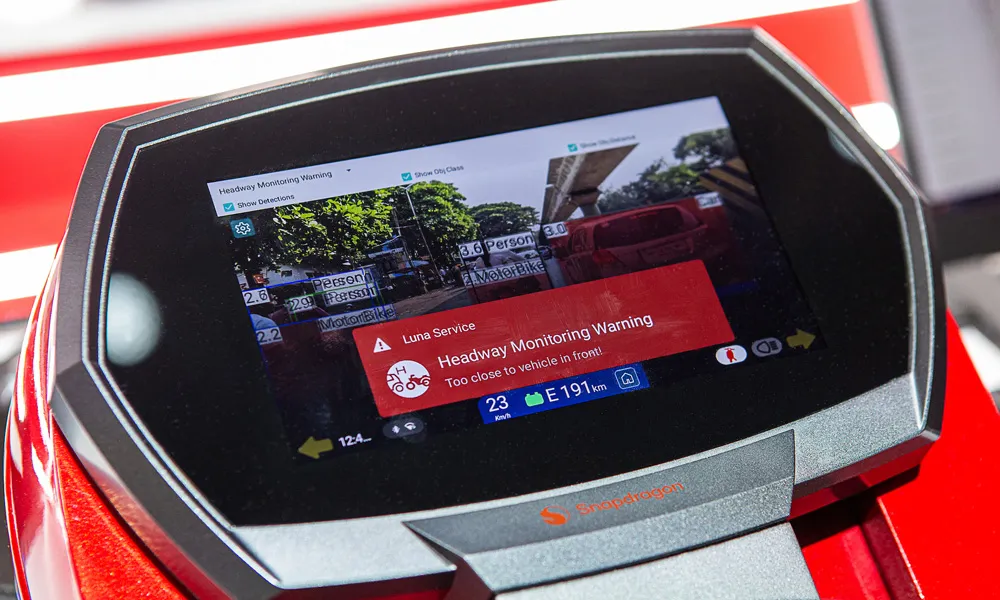According to a report by Berg Insight, global shipments of GPS-enabled GSM/WCDMA handsets increased almost 97 per cent in 2010 to 295 million units. Growing at a compound annual growth rate (CAGR) of 28.8 per cent, shipments are forecast to reach 940 million units in 2015. The attach rates for wireless connectivity technologies in handsets including GPS, Bluetooth and WLAN are increasing steadily as the adoption of smartphones accelerates. These connectivity technologies are already a standard feature on hi
May 16, 2012
Read time: 2 mins
According to a report by 3849 Berg Insight, global shipments of GPS-enabled GSM/WCDMA handsets increased almost 97 per cent in 2010 to 295 million units. Growing at a compound annual growth rate (CAGR) of 28.8 per cent, shipments are forecast to reach 940 million units in 2015. The attach rates for wireless connectivity technologies in handsets including GPS, Bluetooth and WLAN are increasing steadily as the adoption of smartphones accelerates. These connectivity technologies are already a standard feature on high-end smartphones. Adoption of GPS and WLAN will also increase rapidly in the medium- and low-end smartphone segments.
The attach rate for WLAN connectivity in handsets reached 20 per cent in 2010. Berg Insight forecasts shipments of WLAN-enabled handsets to reach 900 million in 2015. “There are numerous compelling use cases for WLAN in mobile phones, ranging from offloading data traffic from increasingly congested mobile networks to media synchronisation and hybrid navigation services”, said André Malm, senior analyst, Berg Insight. “Hybrid navigation technologies are necessary to enable reliable positioning indoors. New multi-mode GPS receivers that also support the Russian Glonass satellite system are already available in handsets. When using the two systems in combination, more visible satellites will increase the chance to receive sufficiently strong signals to get a fix in urban canyons”.
He adds that further performance increases will come from hybrid location technologies that fuse signal measurements from multiple satellite systems, cellular networks and WLAN, together with data from various forms of sensors such as accelerometers, gyroscopes and altimeters.
Starting in the second half of 2011, more handsets supporting the Near Field Communication (NFC) standard for short-range wireless point-to-point communication will also become available. When deployed in mobile phones, NFC can be used for countless applications such as information exchange, electronic ticketing and mobile payments. Shipments of NFC-enabled handsets are forecast to increase from less than two million units in 2010 to 400 million units in 2015.
The attach rate for WLAN connectivity in handsets reached 20 per cent in 2010. Berg Insight forecasts shipments of WLAN-enabled handsets to reach 900 million in 2015. “There are numerous compelling use cases for WLAN in mobile phones, ranging from offloading data traffic from increasingly congested mobile networks to media synchronisation and hybrid navigation services”, said André Malm, senior analyst, Berg Insight. “Hybrid navigation technologies are necessary to enable reliable positioning indoors. New multi-mode GPS receivers that also support the Russian Glonass satellite system are already available in handsets. When using the two systems in combination, more visible satellites will increase the chance to receive sufficiently strong signals to get a fix in urban canyons”.
He adds that further performance increases will come from hybrid location technologies that fuse signal measurements from multiple satellite systems, cellular networks and WLAN, together with data from various forms of sensors such as accelerometers, gyroscopes and altimeters.
Starting in the second half of 2011, more handsets supporting the Near Field Communication (NFC) standard for short-range wireless point-to-point communication will also become available. When deployed in mobile phones, NFC can be used for countless applications such as information exchange, electronic ticketing and mobile payments. Shipments of NFC-enabled handsets are forecast to increase from less than two million units in 2010 to 400 million units in 2015.








